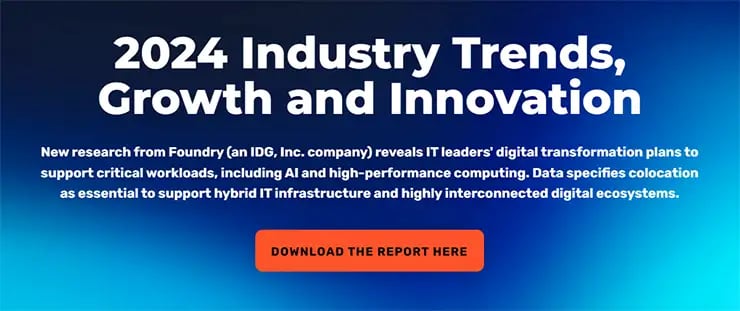
Eliminating Wasted Spend with Hybrid Cloud
As cloud-based services continue to augment, and in some cases replace, traditional on-premises IT systems and workloads for businesses, concerns continue to emerge about cost and waste.
According to this year’s RightScale cloud report, 81% of enterprises are now running a multi-cloud strategy. That means the pressure is on to achieve optimal performance without sacrificing cost-effectiveness. In fact, the same report cited the top initiative for enterprises this year was to optimize cloud costs.
But when it comes to factoring in wasted spend, estimating the numbers is proving hard to do, with cloud users typically underestimating waste by 5% when compared to actual measurements. Add to it the fact that many cloud services subscriptions are purchased individually on a corporate credit card or by informal functional groups that don’t factor into official budgets, and the likelihood of cost and operational inefficiencies compounds.
The challenges with both understanding and managing costs are formidable as organizations seek to throw enormous focus and resources into cloud strategies just to keep up with demands of faster time to market, improved performance and competitive edge.
And while current wisdom maintains that a hybrid cloud solution — a mixture of public and private cloud environments and on-premises systems — is still the answer for many organizations to achieve business goals, the worries over wasted spend persist. Fortunately, there are now viable ways to address waste with hybrid cloud.
Quick hint: it begins with your data center.
How Waste Happens
In the beginning of the cloud computing craze, a key reason for moving to the cloud was to reduce capital expenditures. Taking infrastructure off-site reduced the costs of equipment upkeep, outages, scalability, and power and cooling.
As the cloud trend evolved, organizations began to see logical reasons to keep some of their systems on premises rather than moving everything to the cloud, creating what we know of today as a hybrid cloud environment. But with hybrid cloud came new complexities — and, by extension, costs.
Distributing IT architecture among private and public environments and across many data centers requires multiple network connections that can slow down performance and increase complexity. Trouble with latency and connection flexibility, along with a multitude of pricing add-ons for network products that come with each data center, all translate to increased — and unnecessary — expense.
This may be why enterprises with a hybrid strategy dropped from 58% in 2017 to 51% in 2018, and why cloud spend continues to rise, with 52% of enterprises spending more than $1.2 million a year and 26% spending more than $6 million a year on public cloud alone.
To realize the full promise and benefits of a hybrid cloud solution without bleeding money, it’s a good time to take a close look at your data center provider.
Control Spend by Optimizing Your Hybrid Cloud
Cost savings with hybrid cloud starts with running enterprise IT architecture in the same data center as the cloud provider to take advantage of direct connections.
On a high level, direct connections to public cloud providers via cross-connects in the data center removes the ancillary connections and routes you would otherwise have to take to connect to clouds, while also ensuring security, reliability and low latency. These direct connect services, available from most top public cloud vendors, provide an immediate and direct link to their cloud backbone, which often resides within that same data center.
On a practical level, the actual fees for direct connections are much lower than redundant WAN connections or scaling your ISP. And when it comes to data transfer, cloud interconnect rates (the cost of accessing your data and applications within that cloud) can be significantly lower — often more than 50% less — by running data over a direct cloud connection rather than public internet.
Typically, only a select number of data centers in any given market offer native connections with the top cloud providers. While many data centers may advertise cloud availability, it’s important to ask how they provide the connectivity and if it is native — deployed and supported by the cloud provider — within the data center.
The breadth of network providers available within the data center is another key consideration since the value of deploying in an interconnection-rich data center lies in providing a lower total cost of ownership while improving performance for the end users - driving additional revenue and return for the investment.
Finally, a data center that can also host, manage and scale your private cloud deployment helps to further eliminate wasted spend associated with managing infrastructure in-house, while allowing you to expand applications and operations within your private network.
By reducing complexity, increasing security and performance, and staying flexible at the data center level, you can offset the initial cost of hybrid setup and reduce spend over time by eliminating unnecessary processes and fees and gaining efficiency.
Supporting Your Hybrid Cloud Environment
With the rich data center partner ecosystem and program like CoreSite’s, your entire hybrid cloud environment is supported within the data center, where you receive 100% uptime SLA and direct connections to leading public cloud providers like AWS, Microsoft Azure, Google Cloud Platform, Alibaba Cloud, and Oracle Cloud.
Partners also get help with setup, expert support and access to networks, providers and managed cloud services to create an end-to-end, top-to-bottom, optimized hybrid cloud solution that eliminates waste and (finally) helps deliver the full benefits you’ve been waiting to see. Regardless of where you are in the journey of adapting IT infrastructure to meet ongoing changes in technology, CoreSite can help you at every step, including cloud assessment, transition services, cloud migration, orchestration and ongoing management.
Download CoreSite’s eBook 5 Reasons to Directly Connect Your Hybrid Cloud Solution to learn more about optimizing hybrid cloud to save costs and eliminate wasted spend.









